Attached files
| file | filename |
|---|---|
| 8-K - FORM 8-K - INFINITY PHARMACEUTICALS, INC. | d255566d8k.htm |
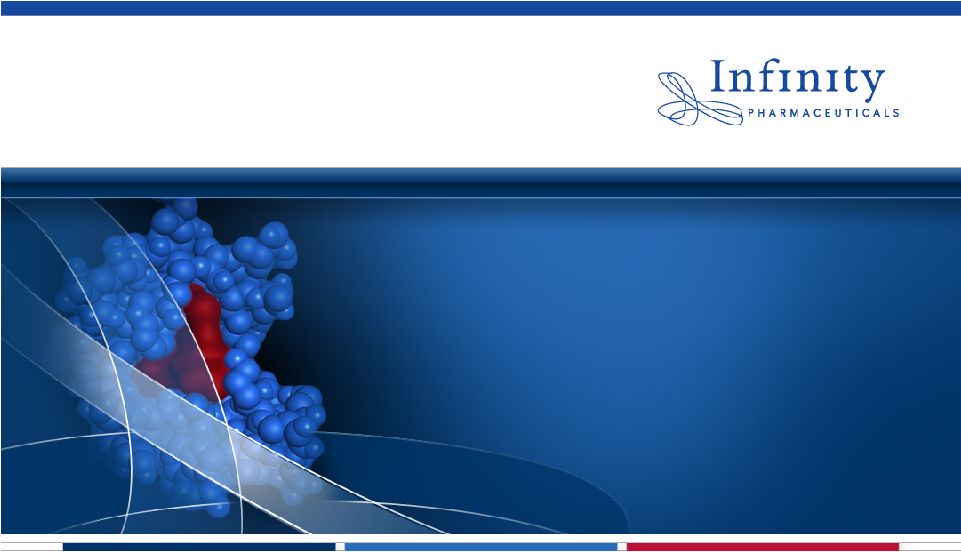 Building a Sustainable, Fully Integrated
Biotechnology Company
November 2011
Exhibit 99.1 |
 Forward Looking Statements
•
This presentation contains forward-looking statements within the meaning of The
Private Securities Litigation Reform Act of 1995. •
These statements involve risks and uncertainties that could cause actual results to
be materially different from historical results or from any future results
expressed or implied by such forward-looking statements. •
Such
forward-looking
statements
include
statements
regarding:
the
therapeutic
potential
of
Infinity’s
Hedgehog
pathway,
Hsp90,
PI3K
and
FAAH
inhibitors; the potential of IPI-926 and Hedgehog pathway inhibition in
addressing chondrosarcoma, pancreatic cancer and myelofibrosis; the
potential of combination therapy based on retaspimycin HCl in addressing
non-small cell lung cancer; Phase 2 development of IPI-940 in pain by
Purdue; expansion of the Phase 2 trial of IPI-926 in myelofibrosis and the
Phase 2 trial of retaspimycin HCl in combination with everolimus in non-
small cell lung cancer, 2011 financial guidance (including total
revenues, operating cash burn, and year-end cash and investments balance), and
the expectation that Infinity will have capital to support its current
operating plan into 2014. •
Such forward-looking statements are subject to numerous factors, risks and
uncertainties that may cause actual events or results to differ
materially
from
the
company's
current
expectations.
For
example,
there
can
be
no
guarantee
that
Infinity’s
strategic
alliance
with
Purdue/Mundipharma will continue for its expected term or that these entities will
fund Infinity’s programs as agreed, or that any product candidate
Infinity is developing will successfully complete necessary preclinical and
clinical development phases. Further, there can be no guarantee that any
positive developments in Infinity’s product portfolio will result in stock price appreciation. Infinity’s expectations could also be affected by risks
and uncertainties relating to: results of clinical trials and preclinical studies,
including subsequent analysis of existing data and new data received from
ongoing and future studies; the content and timing of decisions made by the U.S. Food and Drug Administration and other regulatory
authorities, investigational review boards at clinical trial sites, and publication
review bodies; Infinity's ability to enroll patients in its clinical trials;
unplanned cash requirements and expenditures, including in connection with business
development activities; development of agents by Infinity’s competitors
for diseases in which Infinity is currently developing its product candidates; market acceptance of any products Infinity or its partners
may successfully develop; and, Infinity's ability to obtain, maintain and enforce
patent and other intellectual property protection for any product candidate
it is developing. •
These and other risks which may impact management's expectations
are described in greater detail under the caption "Risk Factors"
included in
Infinity's quarterly report on Form 10-Q for the quarter ended September 30,
2011 filed with the U.S. Securities and Exchange Commission on November 8,
2011. •
Further, any forward-looking statements contained in this presentation speak
only as of the date hereof, and Infinity expressly disclaims any obligation
to update any forward-looking statements, whether as a result of new information, future events or otherwise.
•
All trademarks used in this presentation are the property of their respective
owners. •
Our Internet website is http://www.infi.com. We regularly use our website to post
information regarding our business, product development programs
and
governance.
We
encourage
investors
to
use
www.infi.com,
particularly
the
information
in
the
section
entitled
“Investors/Media,”
as a
source of information about Infinity. References to www.infi.com
in this presentation are not intended to, nor shall they be deemed to, incorporate
information on www.infi.com into this presentation by reference.
2 |
          •
Clear registration paths
•
Multiple possible indications
•
Substantial market potential
•
Full U.S. commercial rights
in oncology/inflammation
INFI in 2011: Considerable Near-Term
Momentum
•
Well-financed, with capital into 2014
•
Purdue/Mundipharma alliance enables robust clinical development and approval
strategies; provides access to markets ex-US & those best served by a GP
sales force •
Compelling scientific rationale
•
Intriguing Phase 1b clinical data
•
Underserved markets
Novel
candidates in
development
•
Rigorous trials
•
Companion biomarker strategy
Active
phase
2 trials
3 |
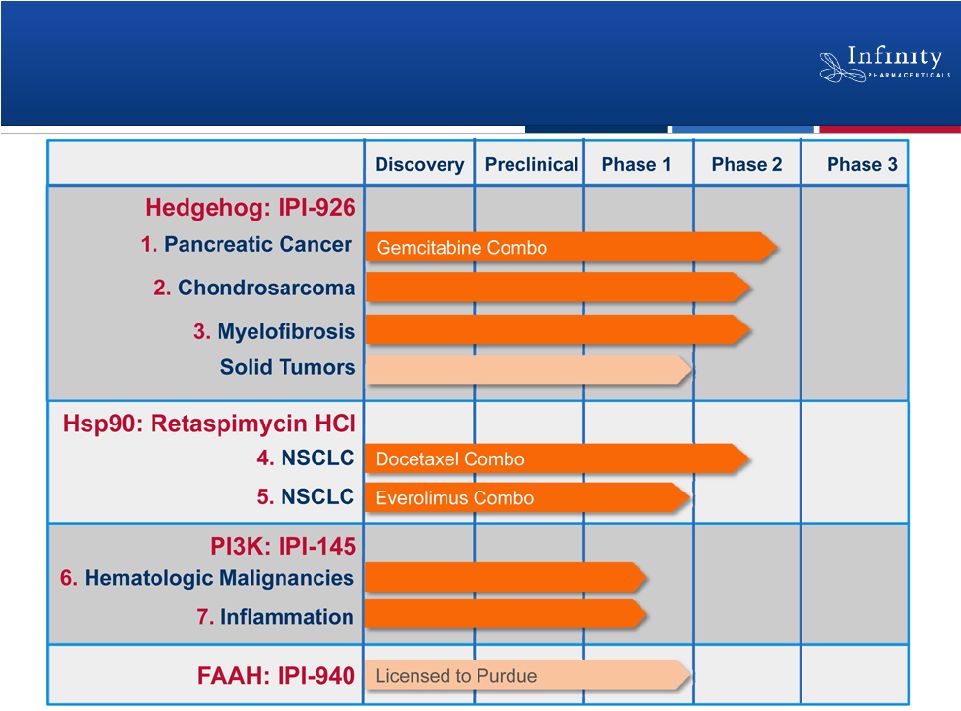 Seven Clinical Studies Initiated in 2011
4 |
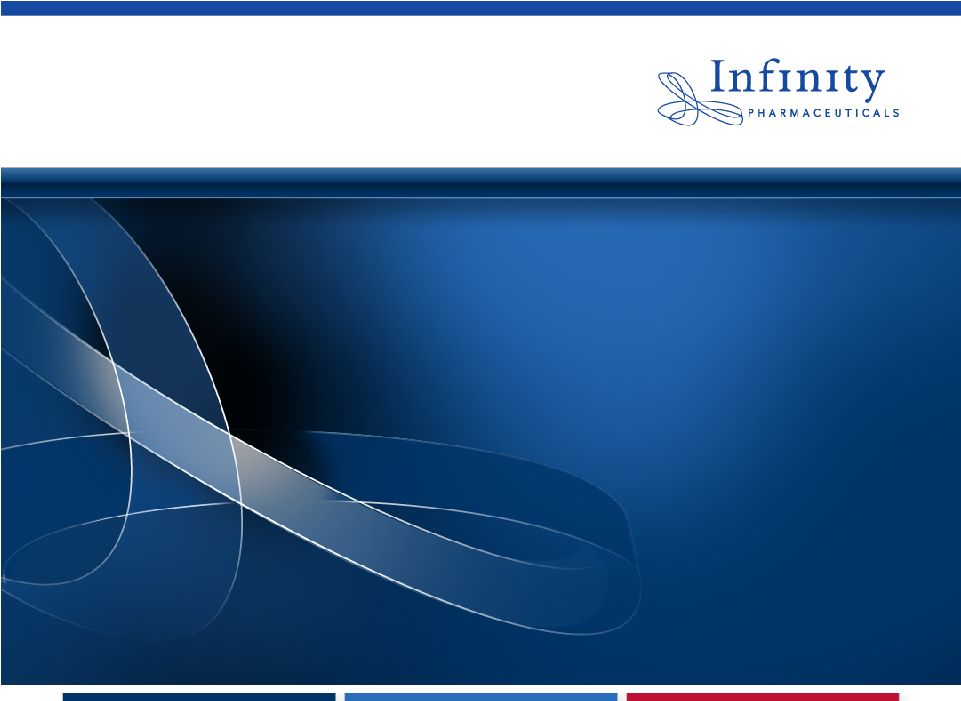 IPI-926:
Addressing Difficult-to-Treat Cancers by
Targeting the Hedgehog Pathway |
 IPI-926: Overview
6
•
Disrupts malignant activation of the Hedgehog pathway by inhibiting
Smoothened
–
Hedgehog pathway known to drive multiple difficult-to-treat cancers
•
Product strategy
–
Target areas with large unmet need
–
Leverage strong scientific rationale
–
Pursue tractable clinical development path
–
Deliver product with significant commercial potential
|
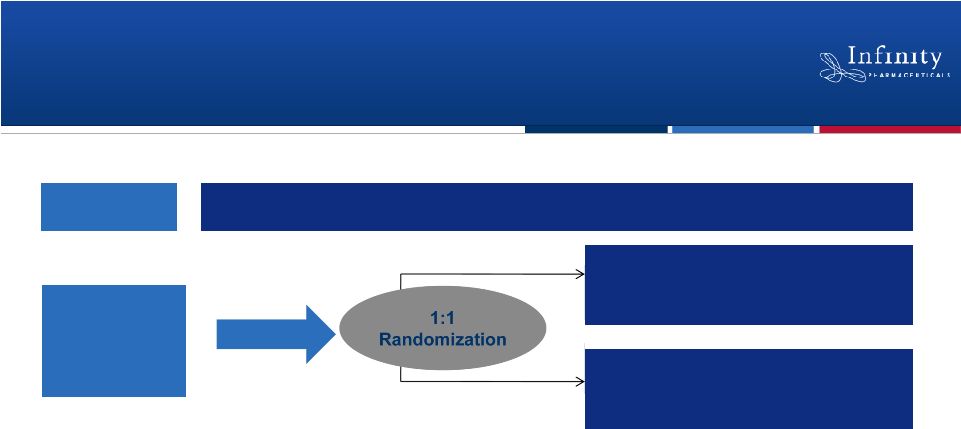 Trial 1: Rigorous Phase 2 Trial of IPI-926 in
Pancreatic Cancer
7
•
Primary endpoint is overall survival
–
Secondary endpoints include progression free survival, time to progression,
overall response rate
•
Rigorous design to mitigate Phase 3 risk
•
Enrollment completed
Dose
Escalation
MTD
IPI-926 (QD) + gemcitabine
(n = 60)
Placebo + gemcitabine
(n = 60)
Phase 1b
Phase 2 |
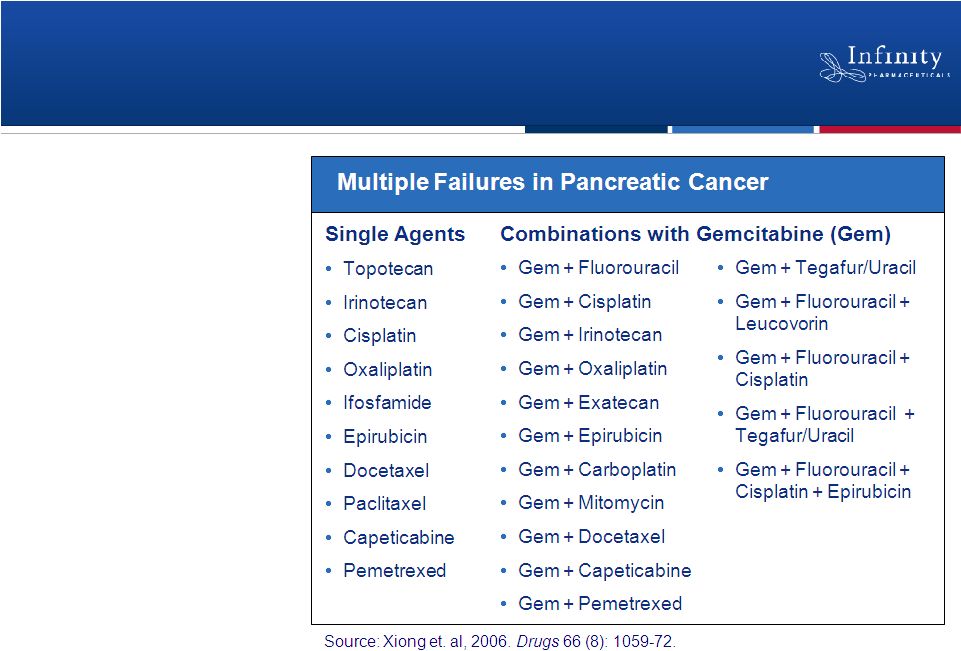 Large unmet need
•
~35,000 deaths /
year in the U.S. alone
•
Average survival
<6 months
•
5-year survival <5%
Resistant to therapy
•
Gemcitabine
approved Rx with
only a ~6 wk survival
benefit
•
Multiple failures in
Phase 2 and Phase 3
Treating Pancreatic Cancer Requires a
Fundamentally Novel Approach
8 |
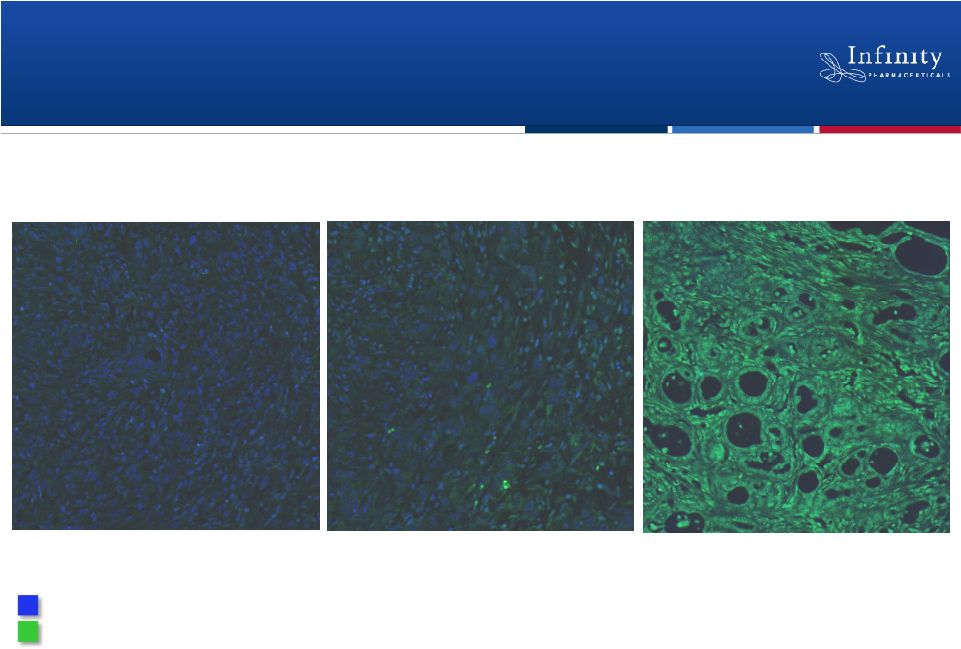 IPI-926 Enhances Delivery of Gemcitabine
to Tumor
9
Vehicle
Gemcitabine alone
IPI-926 +
gemcitabine
Current standard of care
in pancreatic cancer
Tumor cell nuclei
Fluorescent contrast agent
IPI-926 + gemcitabine doubles median survival in a mouse model of pancreatic
cancer (Olive et al. 2009, Science 324: 1457-61.)
|
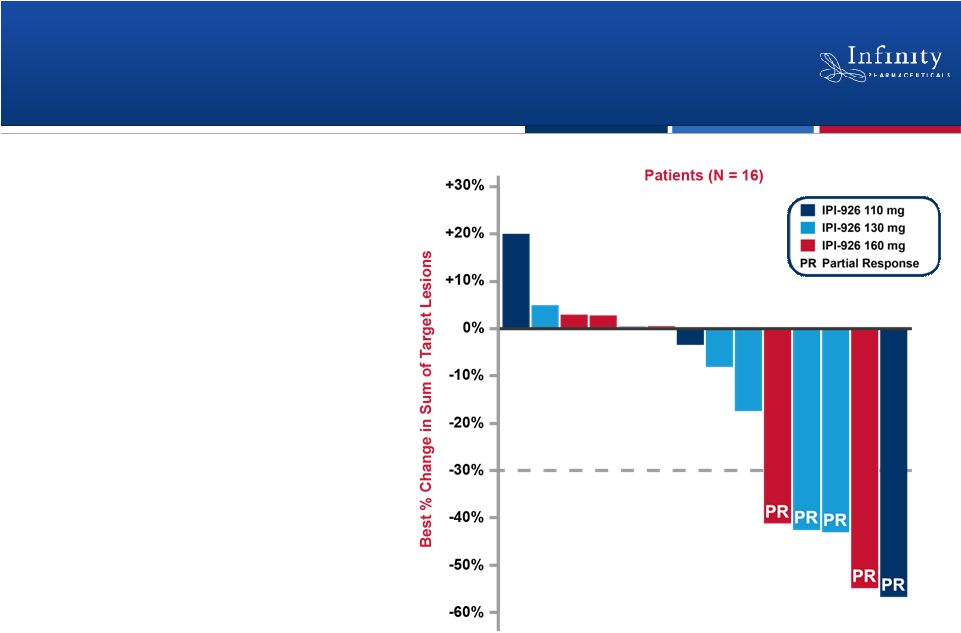 Encouraging Activity and Tolerability
Observed in Phase 1b
•
IPI-926 + gemcitabine led
to a 31% response rate
–
Overall response rate to
gemcitabine is historically
<10%*
•
Favorable PK and safety
profile
–
No interaction between IPI-
926 and gemcitabine
–
Most common AEs were
fatigue and nausea
–
Combination did not reveal
unique or more severe AEs
10
Stephenson
et
al.,
ASCO
2011.
*Moore,
et
al.
J
Clin
Oncol
25:1960-6.;
Seitz
et
al.
Oncology
18:43-7. |
  Expand trial up to 45
patients
Expand trial up to 45
patients
12 patients
11
Trial 2: Exploratory Phase 2 Trial of IPI-926
in Myelofibrosis
•
No current treatments for underlying disease
–
Agents in development reduce spleen size, address symptoms
•
Trial design
–
Expansion will be based on response rate observed in first cohort
–
Dose:
160
mg
IPI-926
administered
orally
once
daily
–
Primary
endpoint:
Response
rate
according
to
International
Working
Group
Criteria |
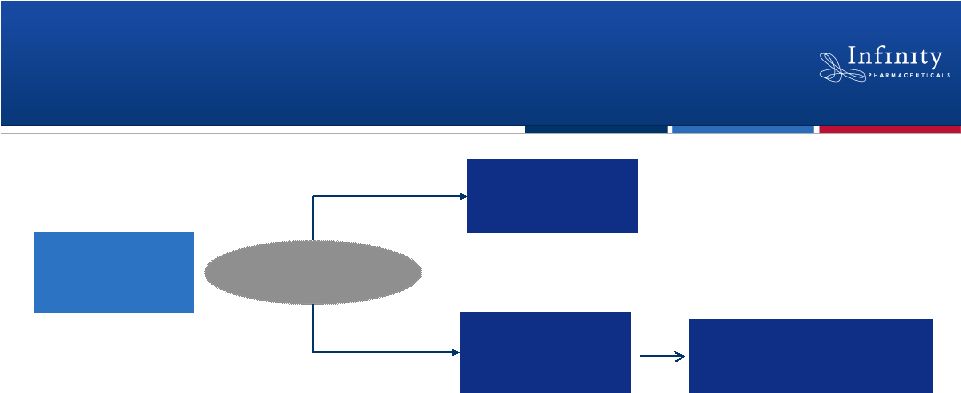 2:1
Randomization
Trial 3: Randomized Phase 2 Trial of IPI-926 in
Chondrosarcoma
•
Global trial at approximately 50 sites
•
Randomized, double-blind, single-agent, placebo controlled study in
metastatic or locally advanced, inoperable chondrosarcoma
–
Trial design reviewed with FDA and EMA prior to study
•
Primary endpoint is progression free survival
–
Secondary endpoints include time to progression, overall survival, overall
response rate and response duration
~140 Patients
IPI-926 (QD)
Placebo
Progression -
crossover to IPI-926
12 |
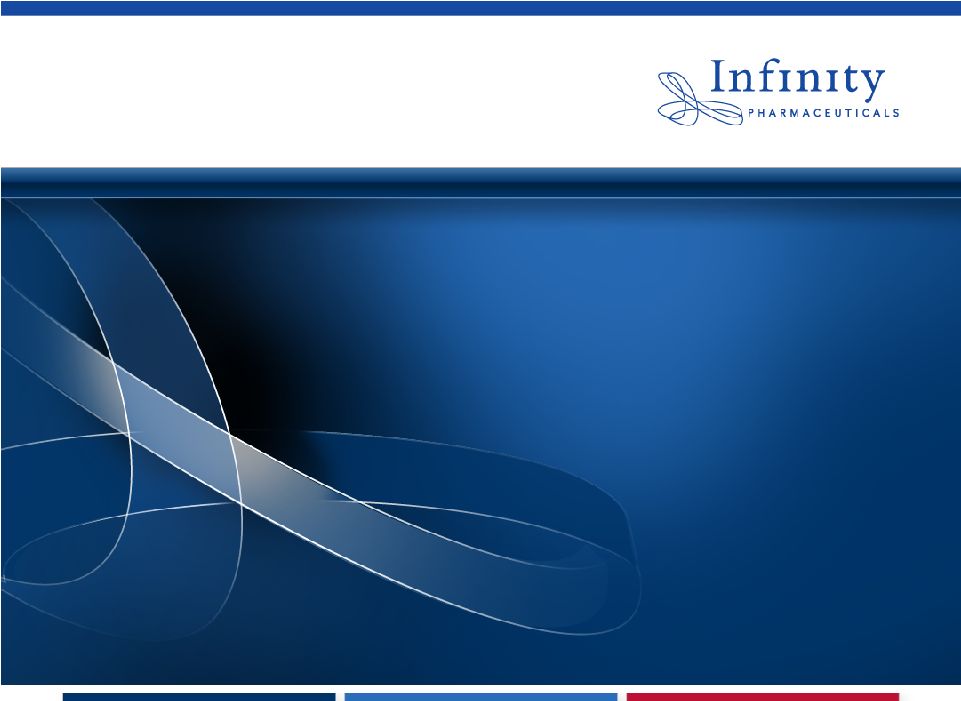 Retaspimycin HCl (IPI-504)
Targeting Non-Small Cell Lung Cancer Through
Hsp90 Inhibition |
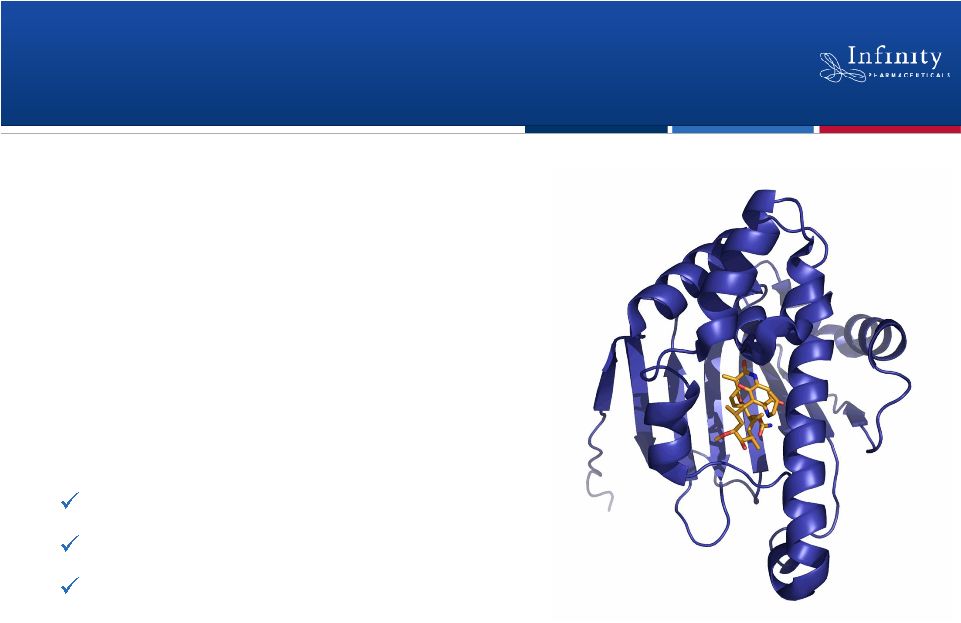 Function of Hsp90
•
“Chaperone”
protein necessary for stability
and function of certain ‘client’
proteins,
including oncoproteins
Retaspimycin HCl (IPI-504)
•
Highly potent, selective, water
soluble Hsp90 inhibitor
Program strategy; determine optimal:
Dose and schedule
Combination agents
Indications
Current status: Two clinical trials in NSCLC
14
Heat Shock Protein 90 (Hsp90):
An Important Cancer Target |
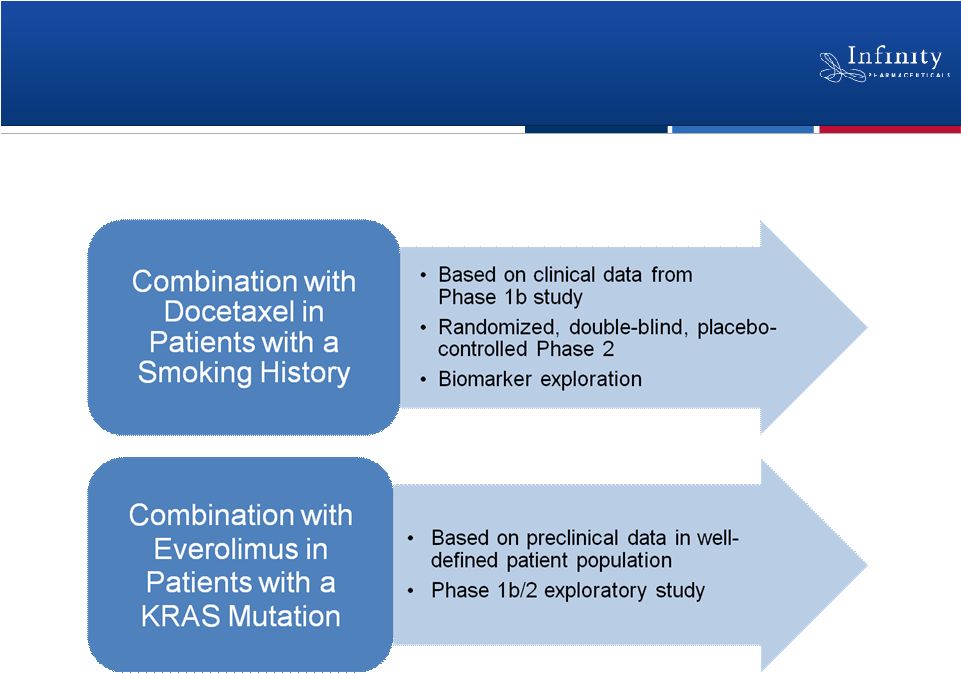 Retaspimycin HCl: Potential Breakthrough
Approach to NSCLC
Pursuing multiple development paths as combination therapy
15 |
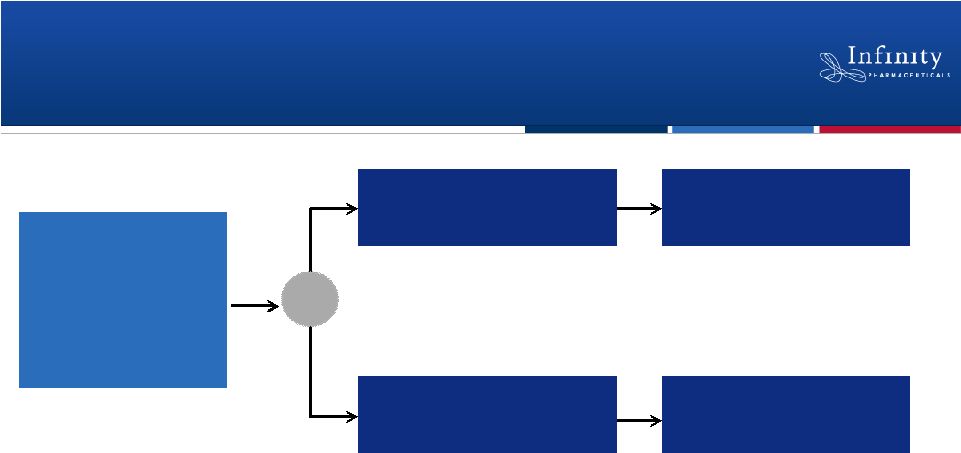 Trial 4. Phase 2 Trial of Retaspimycin HCl in
NSCLC Patients with a Smoking History
16
~200 smokers w/
2
nd
-
or 3
rd
-line
NSCLC
(docetaxel naïve)
•
1°
Endpoint:
OS
•
2°
Endpoints:
PFS,
ORR,
Safety
•
Exploratory:
Biomarkers, PG markers
Follow-up for OS
Follow-up for OS
Docetaxel (q3w) +
Retaspimycin HCl (weekly)
(N=100)
Docetaxel (q3w) +
placebo (weekly)
(N=100)
•
Dosing Schedule
–
Retaspimycin
HCl:
450
mg/m
2
IV
QW
–
Docetaxel:
75
mg/m
2
IV
Q3W
R |
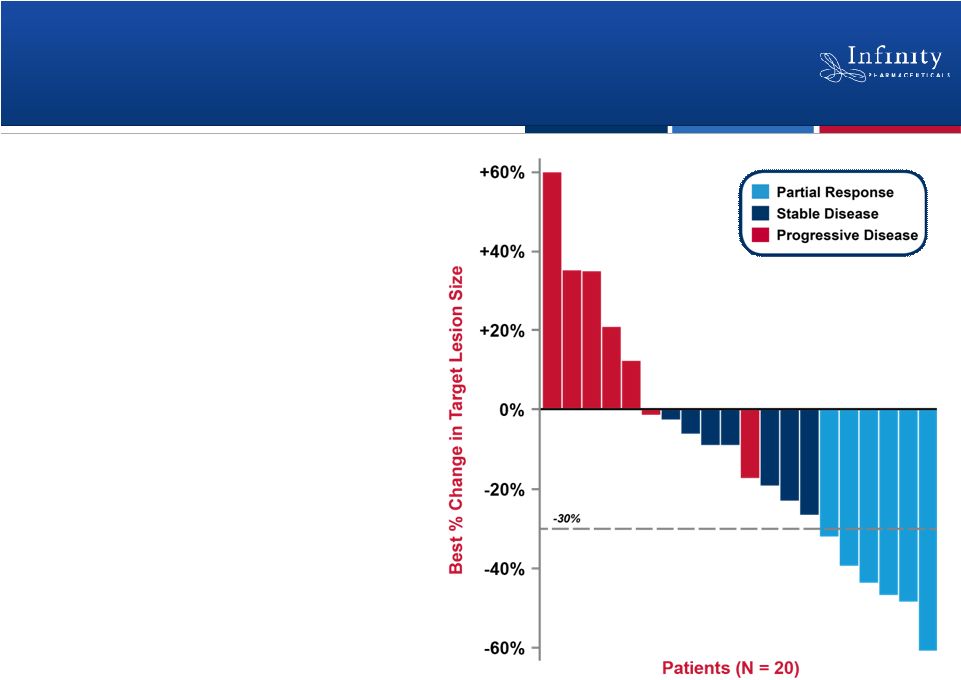 Phase 1b Trial: Clinically Active in
Combination with Docetaxel
17
Compelling Phase 1b data
•
Partial response seen in 6
patients (ORR = 26%)
•
Stable disease seen in 7
patients
Riely et al., ASCO 2011. |
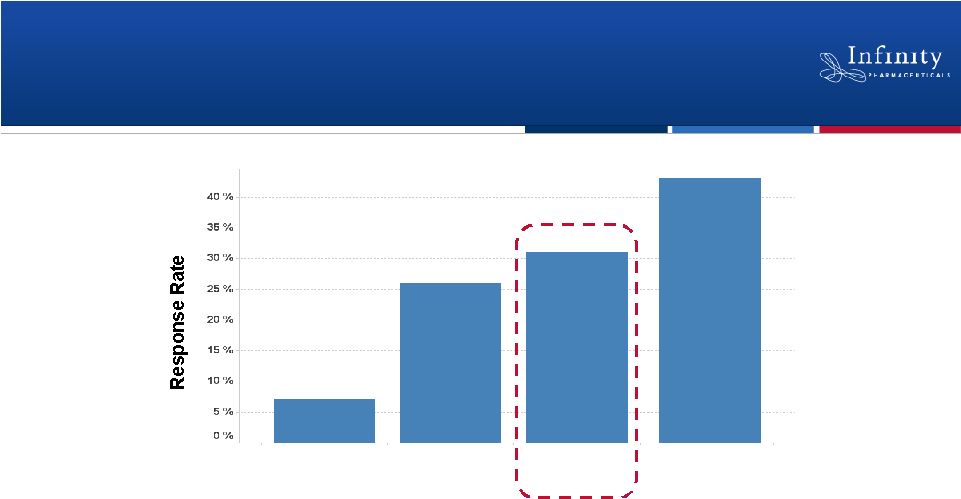 Responses Observed in Patients with
Historically Poor Prognoses
•
In exploratory analyses, patients with the highest response rates fell into
overlapping categories:
–
Current or former smokers (ORR = 33%)
–
Those with squamous cell carcinoma (ORR = 43%)
18
Historical 2
nd
Line
Docetaxel
NSCLC
Patients in
Trial
N=23
Smokers
N=18
Squamous
Cell
Carcinoma
N=7
Patient Populations
Retaspimycin HCl plus Docetaxel
Overall Response Rate
Riely et al., ASCO 2011. |
 Phase 1b Trial: Favorable Safety Profile
•
All toxicities were manageable
•
No unexpected or overlapping toxicities seen
•
GI toxicities were primarily Grade 1 or Grade 2
•
No significant ocular toxicities were observed
•
No dose reductions or discontinuations in response to liver
function tests
19
Riely et al., ASCO 2011. |
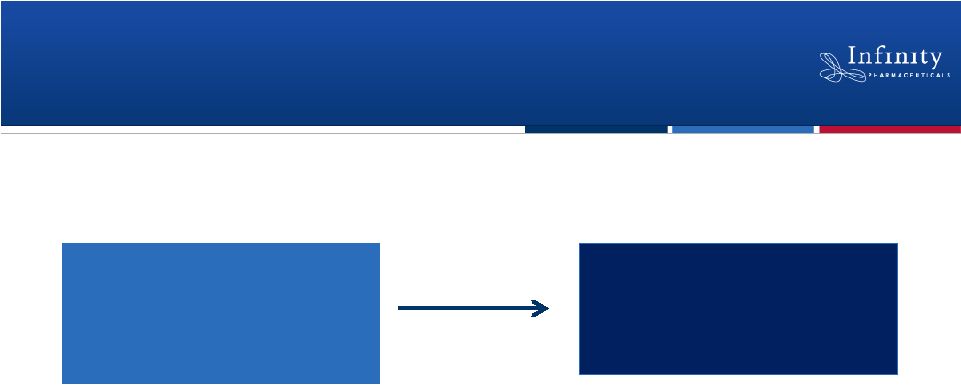 Phase 2 : Evaluate
safety and activity
Phase 1b: Determine
recommended
Phase 2 dose in
mKRAS NSCLC
Dosing Schedule
•
Retaspimycin HCl:
450
mg/m
2
IV
QW
•
Everolimus:
5-10
mg
oral
QD
Trial 5: Phase 1b/2 Trial of Retaspimycin
HCl in NSCLC Patients with mKRAS
1°
efficacy endpoint: Response Rate
•
Phase 2 portion of study may be expanded up
to 45 patients based on response rate observed
in first cohort
•
Expected ORR to either agent alone in KRAS
mutant NSCLC = 0%
20 |
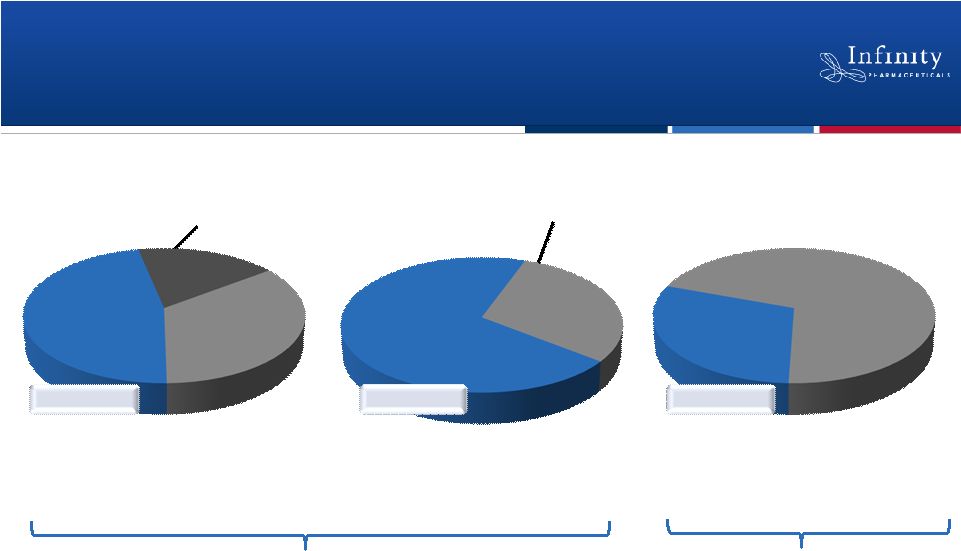 %
NSCLC Patients by Cell Type (2009)
% Stage IIIb/IV NSCLC Patients
by Smoking Status (2009)
NSCLC: Significant Commercial Opportunity
% NSCLC Patients
by Mutation Status (2009)
21
Squamous
Cell
Carcinoma
35%
Adenocarcinoma
47%
Large Cell
Carcinoma
18%
> 15 pack years
70%
Non-smokers &
=
15 pack years
30%
KRAS
30%
Non-KRAS
70%
~145,000
~182,000
~125,000
Sources:
Decision
Resources
NSCLC
Pharmacor
Report,
June
2009;
Cancer.
2010
February
1;
116(3):
670–675.
doi:
10.1002/cncr.24813.
Estimates based upon G7 regions (US, UK, IT, DE, ES, FR, JP)
Phase 1b/2 trial of
retaspimycin HCl +
everolimus
Phase 2 trial of retaspimycin HCl + docetaxel |
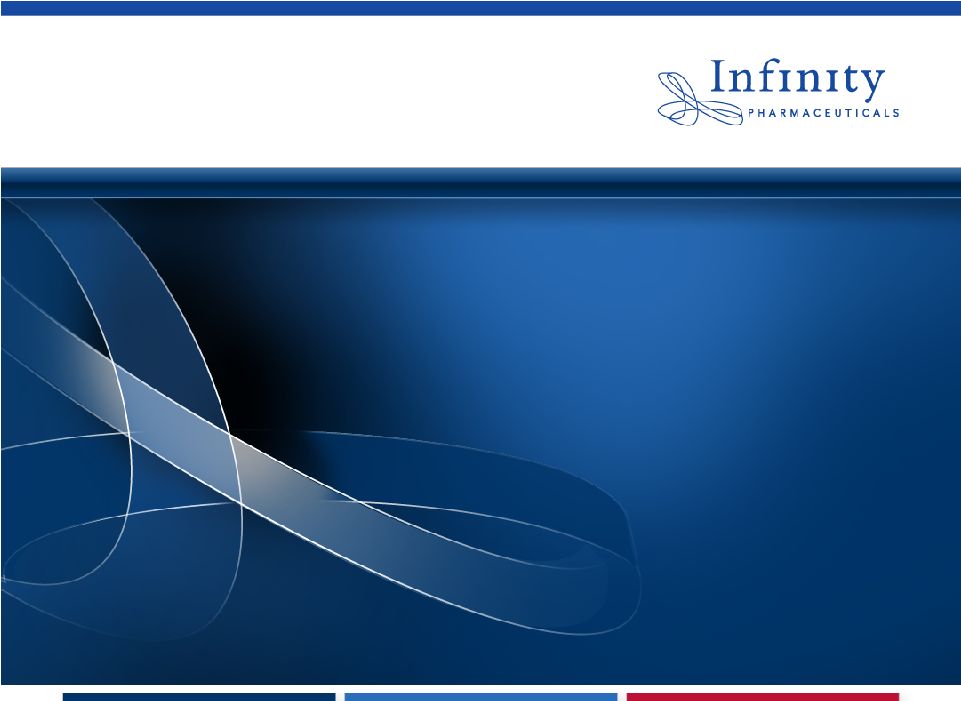 IPI-145:
Potential Best In-Class Opportunity for Inflammation
and Hematologic Malignancies |
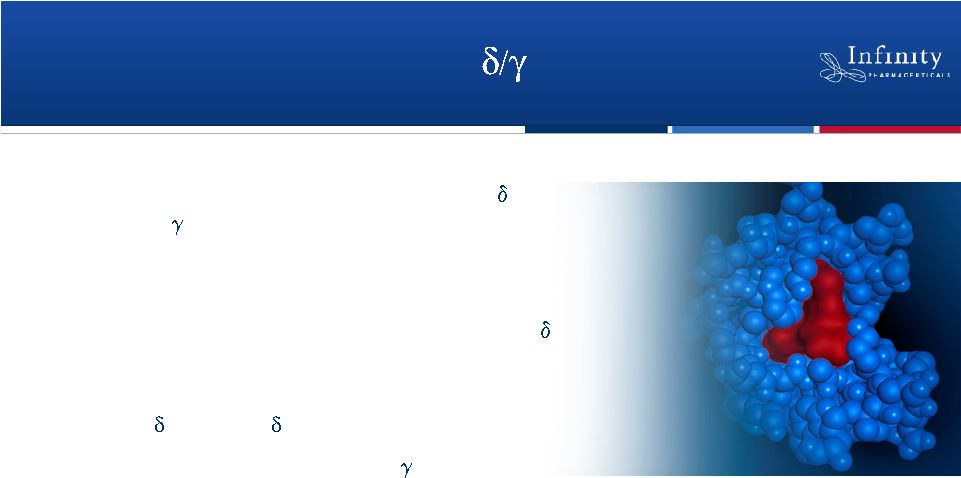 IPI-145: Novel PI3-Kinase
Inhibitor
•
IPI-145 is a potent, oral inhibitor of PI3K-
and PI3K-
–
PI3K plays a role in hematologic
malignancies and inflammatory conditions
•
Compelling
human
proof-of-concept
of
PI3K-
inhibition in heme malignancies
–
IPI-145 is 3-
to 30-fold more potent inhibitor of
PI3K-
than PI3K-
inhibitor with reported data
•
Data suggest inhibition of PI3K-
is important,
particularly in inflammation
–
IPI-145 has shown compelling preclinical activity in
several models of inflammation
23 |
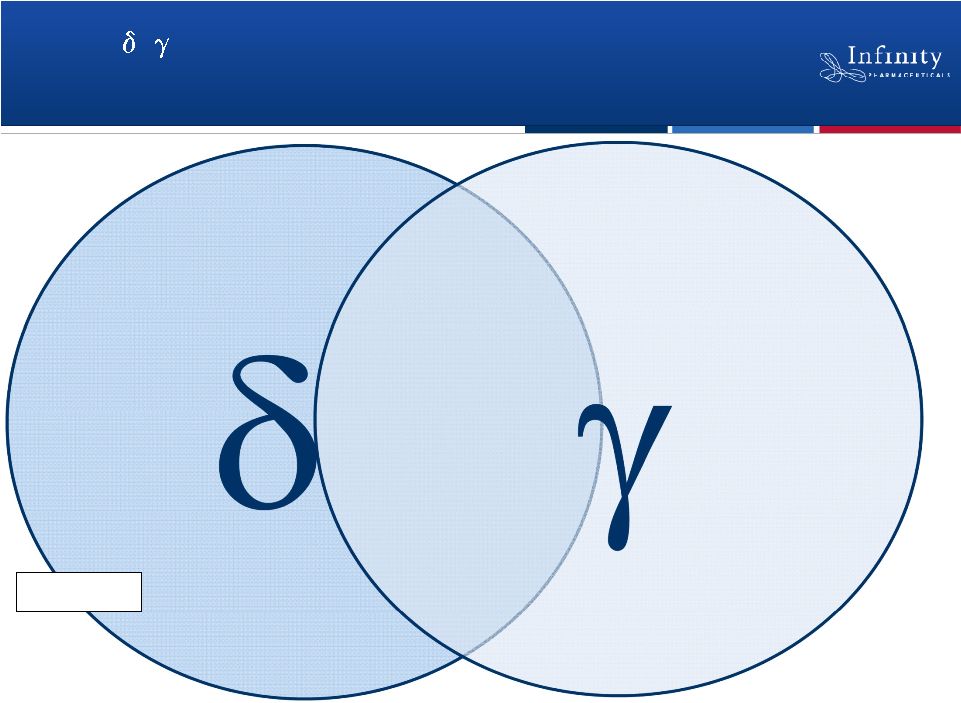 PI3K-
,
: Distinct and Overlapping Roles
Collaborating in Inflammation and Oncology
T-
and B-cells:
Activation
Function
Survival
Mast cells
Neutrophils
Monocytes
Eosinophils
Leukocyte chemotaxis
Microglial activation
Tumor associated immune cells
Graft
vs Host
Disease
Asthma
Rheumatoid Arthritis
Crohn’s Disease
Lupus
Atherosclerosis
Sepsis
Solid tumor
Adaptive
Innate
Diseases
Cancer
24 |
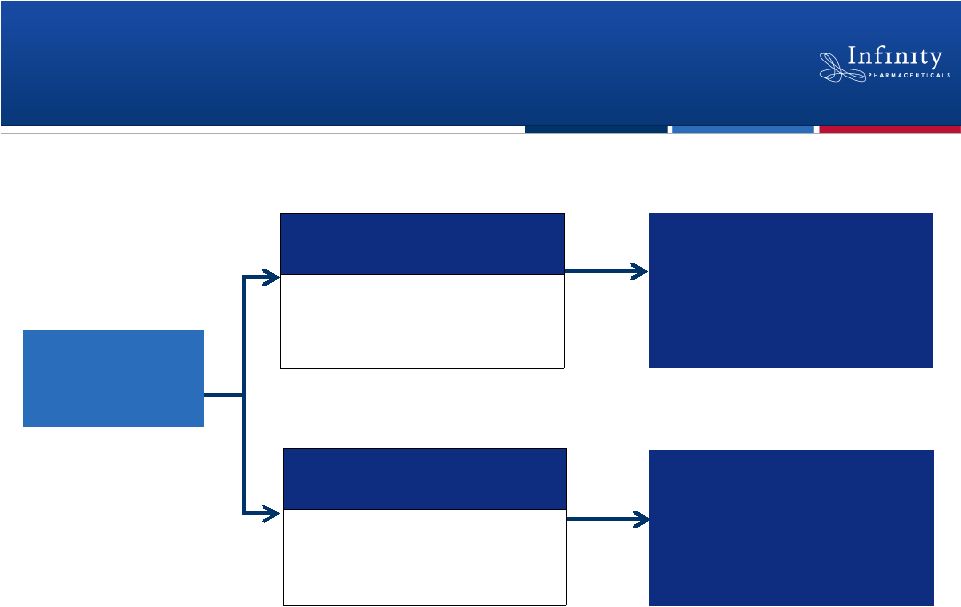 Trials 6 & 7: Dual Clinical Development Path
with IPI-145
IPI-145
Phase 1 in Hematologic
Malignancies
•
Dose Escalation
•Expansion Cohorts
Phase 1 in
Healthy Subjects
•
Single Ascending Dose
•
Multi Ascending Dose
Phase 2 in
Inflammation
Phase 2 in
Hematologic
Malignancies
25 |
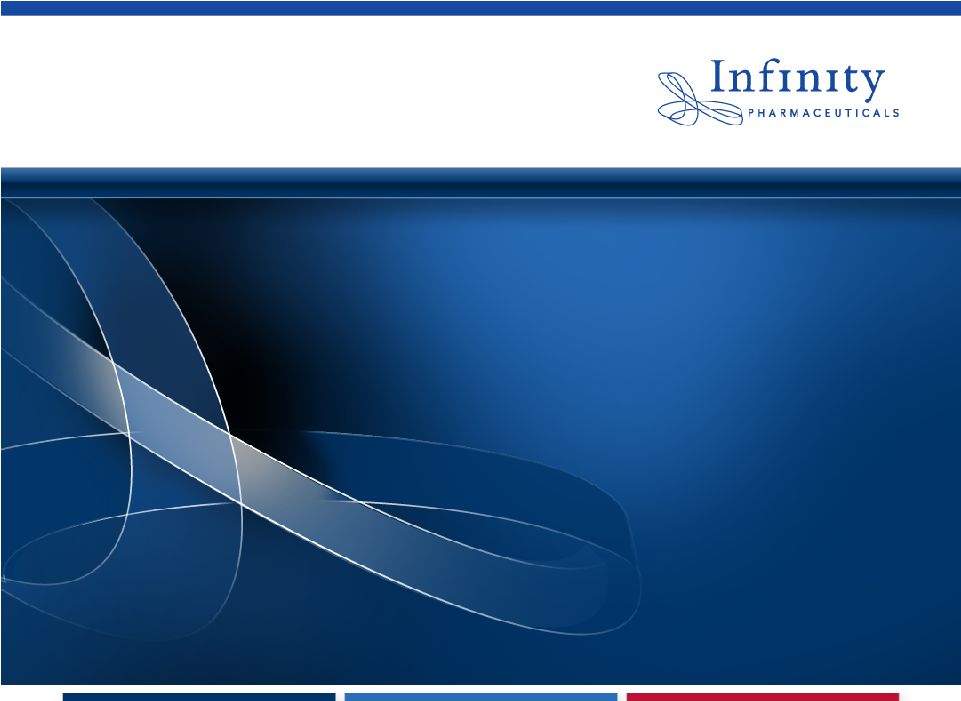 IPI-940: Targeting Pain Through
Inhibition of FAAH
26 |
 •
IPI-940 inhibits FAAH and is designed to potentiate the effect
of anandamide
–
Constitutively active FAAH degrades anandamide, the body’s
natural source of pain relief
•
Encouraging data from Phase 1 trial in healthy volunteers
–
Marked FAAH inhibition and increased anandamide levels
–
No observed dose-limiting toxicities
•
Purdue and Mundipharma exercised rights for
worldwide development and commercialization
–
Purdue expected to begin Phase 2 development in pain
IPI-940: Phase 2-Ready FAAH Inhibitor
27 |
 Strong Financial Foundation to
Reach Key Inflection Points
28 |
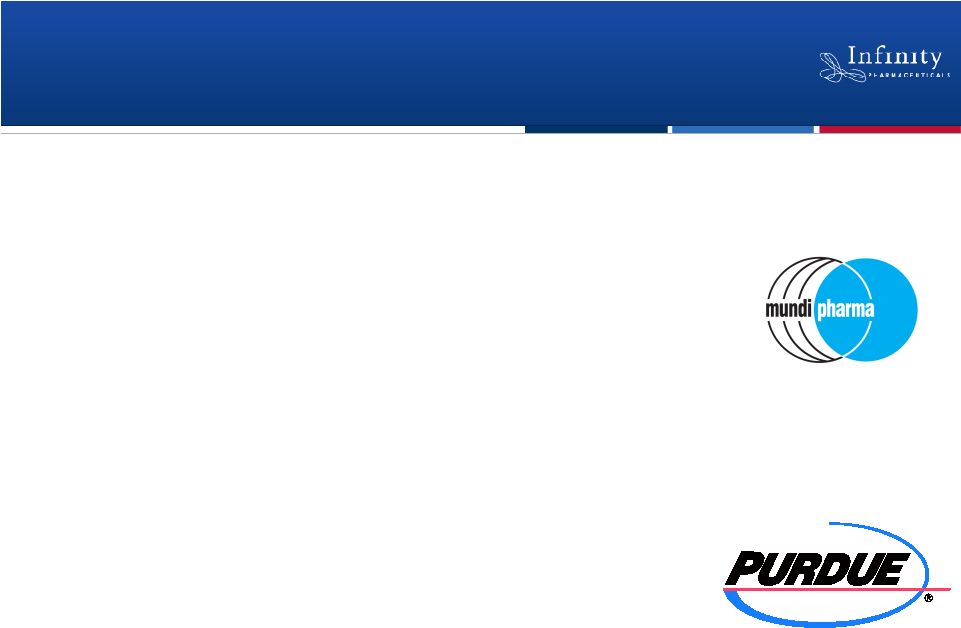 Strategic Alliances Provide Funding and
Access to Global Markets
29
Hedgehog, PI3K and early discovery
•
R&D funding from Mundipharma
•
INFI to develop and register product candidates globally
•
INFI to commercialize products in the U.S.
•
Access to ex-US markets: Mundipharma to commercialize
products ex-U.S.
•
INFI entitled to royalty of 10% to 20% on ex-U.S. sales
FAAH
•
Purdue and Mundipharma responsible for global development
and commercialization
•
Access to GP sales force: Purdue and Mundipharma
responsible for global commercialization
•
INFI entitled to royalty of 10% to 20% on global sales
|
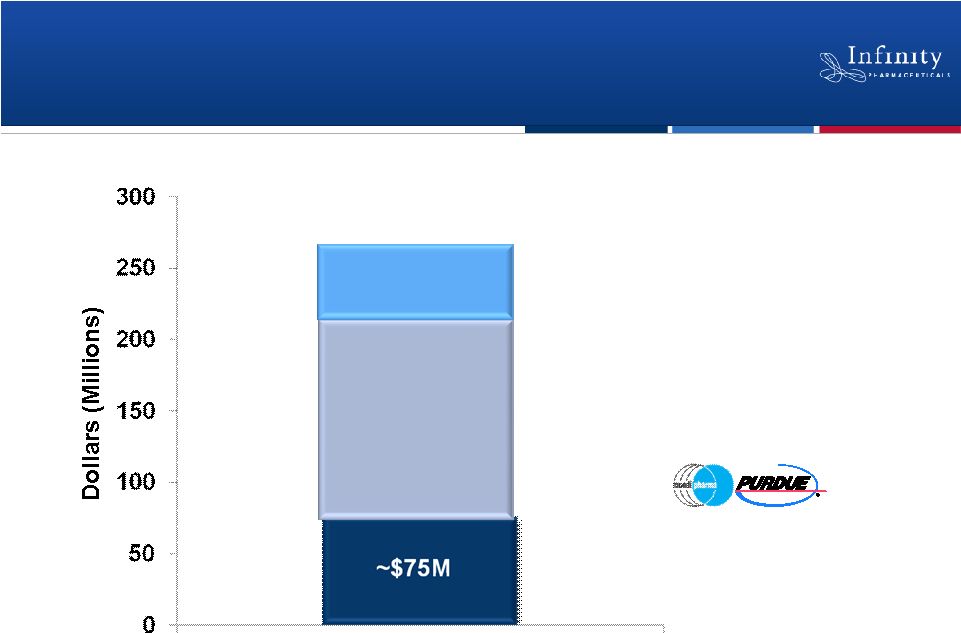 Financial Strength to Drive Value Creation
30
$50M
Line of Credit
1
(Balloon note at prime, matures 2019)
Cash and Investments
(as of 9/30/11)
Current and Committed Capital
$256 Million
1
Line
of
credit
may
be
drawn
for
any
corporate
purpose.
~$131M
Committed R&D Funding
Remaining in 2011 and 2012
(as of 9/30/11) |
 2011 Financial Guidance:
Cash Runway into 2014
•
Projected 2011 revenue of $90M -
$95M
•
Projected 2011 operating cash burn of $30M -
$40M
•
Anticipate year-end cash and investments balance of
$110M -
$120M
–
Based on current operating plan; excludes $110M R&D funding
commitment from Mundipharma for 2012
•
Approximately 26.7 million shares outstanding
31 |
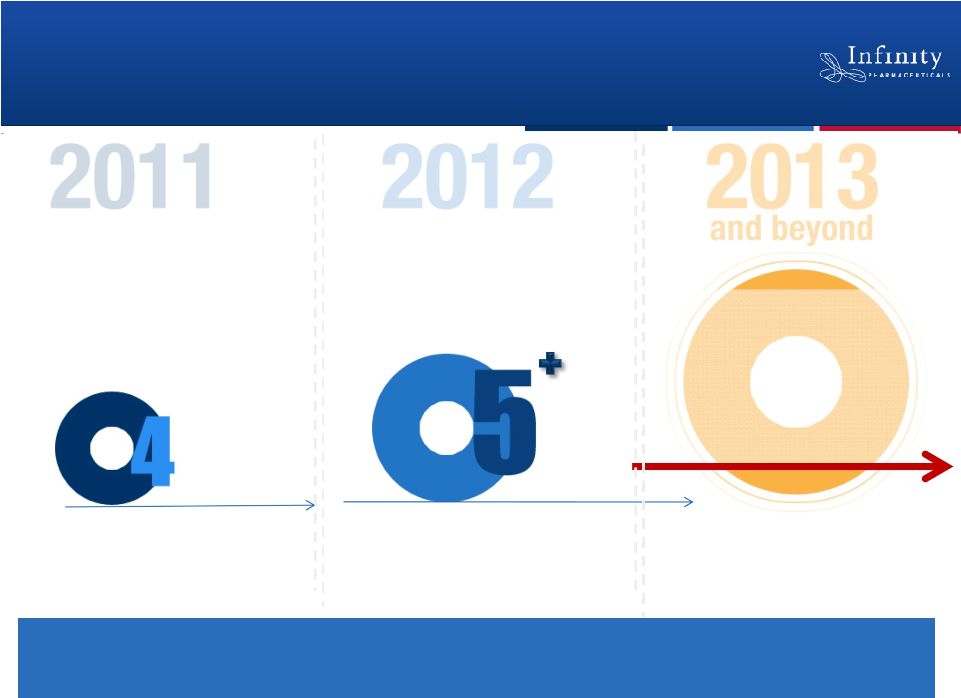       INFI
in 2011: Considerable Near-Term Momentum
•
Compelling scientific rationale
•
Intriguing Phase 1b clinical data
•
Underserved markets
Novel
candidates in
development
•
Rigorous trials
•
Companion biomarker strategy
Active
phase
2 trials
•
Well-financed, with capital into 2014
•
Purdue/Mundipharma alliance enables robust clinical development and approval
strategies; provides access to markets ex-US & those best served by a GP
sales force •
Clear registration paths
•
Multiple possible indications
•
Substantial market potential
•
Full U.S. commercial rights
in oncology/inflammation |
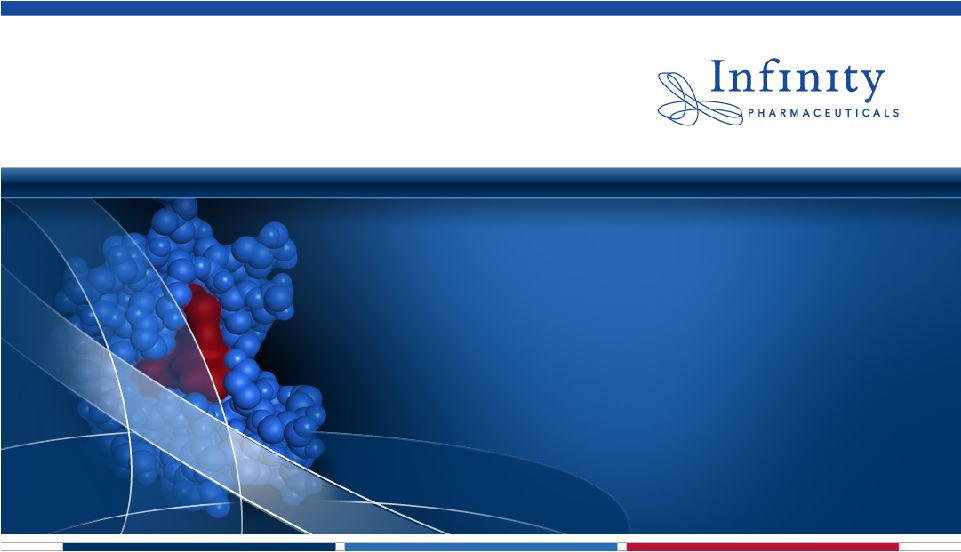 Building a Sustainable, Fully Integrated
Biotechnology Company
November 2011 |
